From the establishment of the Beswick factory in Longton, Stoke on Trent in 1894, animal figures of a very high quality and at an affordable price to the collector with a modest budget have been represented in Beswick sales catalogues and advertising material.
The production of Beswick figures can be divided into two periods.
From the 1890's to the mid 1930's the Beswick factory produced, in the Staffordshire traditional form, a combination of tableware, decorative porcelain, majolica and a range of figures and animals such as generals, milkmaids, mantle dogs, cattle and horses.
Critics of the time described
more...
their models to be of a higher quality than those of their precursors.
Unfortunately for collectors, Beswick followed the early Staffordshire tradition of not marking their figures and as a consequence, it is very difficult to identify the names of the modellers, designers and artists from that period until the 1930's.
In 1934 after the death of his father, John Ewart took over as managing director and moved the company away from the production of tableware to placing a greater emphasis on figurines, and most importantly for collectors, introduced a 'shape book' and a systematic numbering catalogue recording the impressed mark and backstamp on the full range of Beswick products.
They also appointed Arthur Gredington as the company's first full time modeller in 1939. The combination of these two events created the golden age of Beswick which continued until the factory closed in 2002.
less...
From the establishment of the Beswick factory in Longton, Stoke on Trent in 1894, animal figures of a very high quality and at an affordable price to the collector with a modest budget. have been represented in Beswick sales catalogues and advertising material. The production of Beswick figures can be divided into two periods.
From the 1890's to the mid 1930's the Beswick factory produced, in the Staffordshire traditional form, a combination of table ware, decorative porcelain, majolica and a range of figures and animals such as generals, milkmaids, mantle dogs, cattle and horses. Critics of the time
more...
described their models to be of a higher quality than those of their precursors. Unfortunately for collectors, Beswick followed the early Staffordshire tradition of not marking their figures and as a consequence, it is very difficult to identify the names of the modellers, designers and artists from that period until the 1930's.
In 1934 after the death of his father, John (Ewart) took over as managing director and moved the company away from the production of tableware to placing a greater emphasis on figurines. And most importantly for collectors, introduced a 'shape book' and a systematic numbering catalogue recording the impressed mark and backstamp on the full range of Beswick products.
They also appointed Arthur Gredington as the company's first full time modeller in 1939. The combination of these two events created the golden age of Beswick which continued until the factory closed in 2002.
Beswick was a tight knit family firm which was renowned for its ability to produce high quality traditional Staffordshire figures and table ware from its formation in 1894. By the time John (Ewart) Beswick took over as Managing Director in 1934 the firm had prospered under three generations of Beswick management.
John, along with his Uncle Gilbert who worked alongside with him as Sales Director, worked to change the direction of the company from producing tableware to the production of figurines. This required the recruitment of a modelling team. In 1939 Arthur Gredington was appointed as the company's first full time modeller.
This was an inspired choice as the team of Ewart, Gilbert and Arthur Gredington created the Beswick golden age, which lasted to the 1990's, long after all three had left the Company Arthur Gredington's influence at Beswick was enormous. He had a great talent for modelling with his accurate and realistic creation of animals of all kinds such as horses, dogs, cats, birds, wild animals, farm animals, fish and more all of the highest quality.
He also displayed versatility and humour with his design of the wide range of Beswick story book figurines where he gave human characteristics to the story book animals. Gredington designed and modelled the first Beatrix Potter figurines in 1947 and from this base, Beswick produced a vast array of cartoon figures, character animals, Brambly Hedge and other story book figures.
Arthur Gredington retired in 1968. Ewart and Gilbert Beswick, with no successors to take over the business, sold to Royal Doulton in 1969. However, such was his skill and talent, that many of Gredington's models remained in production to ensure that the Beswick factory continued to produce the highest quality figurines until the factory closed in 2002.
less...
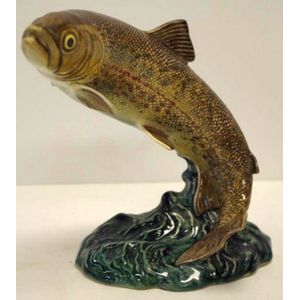

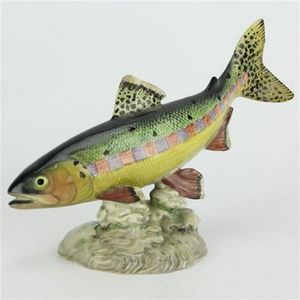



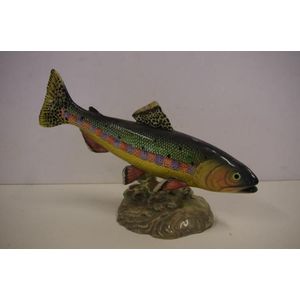
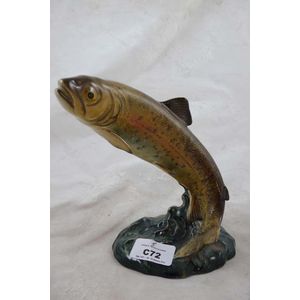

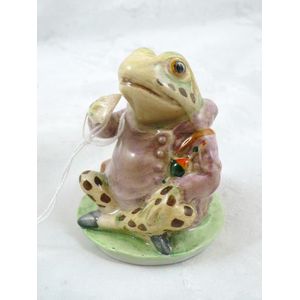
 Loading more...
Loading more...